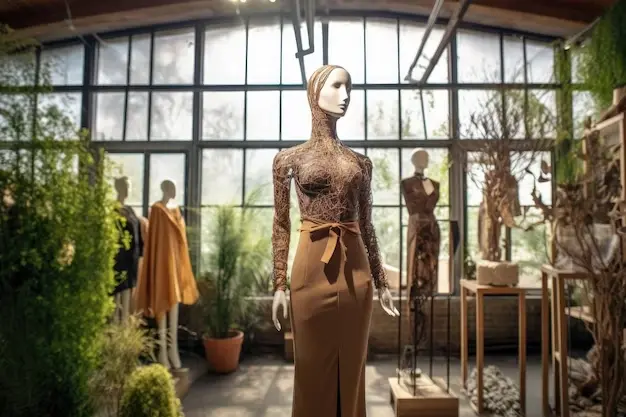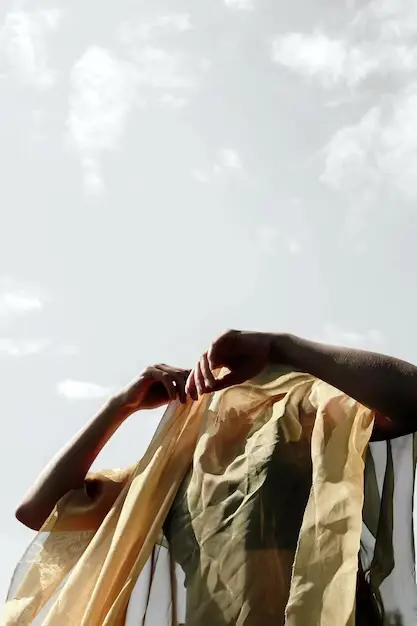Sustainable Fashion Design Education Embracing Fashion Courses
- Fashion Design
Sustainable Fashion Design Education Embracing Fashion Courses
Contact us
Bengaluru
Campus 1 : JD School of Design, No. 18-1, Brigade Road, Bengaluru,Karnataka – 560 001.
Campus 2 : No. 40, Swan House, 4th Cross, Residency Road, Bengaluru, Karnataka – 560001.
Goa
Musthtifund Saunstha , Near Mahalaxmi Temple,Dada Vaidya Road, Goa-403001
Education in fashion design is slowly incorporating sustainability into their courses as a result. Hence this shift towards tolerance is not a fad but a right step towards change for the industry. This blog will look at the integration of Sustainable fashion design education and how courses are emphasizing green approaches in the programs along with Sustainable fashion techniques.
The Rise of Sustainable Fashion Design Education

Eco-fashion design is fundamentally oriented on the production of clothes following the principles of environmental protection and social justice. This includes such practices as; Sustainable materials in fashion design, minimizing quantities of any manufactured substance and. Items produced should not be manufactured by exploiting women and children or using forced labour. Following globalization and increased awareness of the impact that fashion has on the ecological system, consumers today are showing concern about consuming eco-friendly clothes.
Although the educational approaches of fashion schools and academies are quite different and varied as we illustrated in the previous sections, the principle of sustainability scarcely resonates throughout the fashion education systems, which is critical in today’s world.
The integration of sustainability has to be within fashion education. It helps prepare future designers to address the need that is slowly emerging in the market; that is being environmentally conscious. They are also educated on how they can work towards creating solutions and how the industry can be made green. In this context, the focus on sustainable fashion design education enables postgraduate students to learn about eco-friendly fashion design trade secrets and procedures.
Curriculum Changes in Fashion Design Courses

Introduction of Eco-Friendly Materials
The introduction of eco-friendly materials can also be considered as one of the major shifts in the education for sustainable fashion design. Such fabrics as organic cotton, bamboo, and recycled materials are some of the module substituents in the course offerings. Through these materials, students are made aware of the advantages and disadvantages of using these in their designs mostly giving prominence to promoting sustainable materials in fashion design.
Example Materials Covered:
- Organic Cotton: Combining the goodness of natural farming that eliminates the use of chemical fertilisers and pesticides.
- Bamboo: A vegetation with a very rapid growth rate and importantly they are renewable.
- Recycled Fabrics: Composed from recycled bottles or used fabrics.
Practical Applications of Sustainability in Courses

Sustainable Fashion Projects
Extracurricular projects such as sustainable fashion design projects are supported by the institution for the students. Some of these projects include designing this collection with only sensitive materials that are also sustainable.
Project Examples:
Developing a brand image for a new fashion line that will not cause harm to the environment.
Designing clothes with the use of retrieved materials.
With no restriction in the selection of dyes, an effort should be laid down to collect dyes that are organic/natural.
Collaborations with Eco-Friendly Brands
Most of the fashion design courses incorporate environmentally friendly firms to provide practical experience. Such partnerships let the students develop sustainable projects, and engage with specialists in the field. Sustainable fashion design internships enable the student to put into practice the knowledge acquired in class.
Collaboration Examples:
Working with other tree-friendly fashion companies.
Inviting lectures from famous designers, who pay special attention to the environmental friendliness of their shoes.
Their cooperation with companies about adherence to sustainability strategies and programmes.
The Role of Technology in Sustainable Fashion Education
Digital Fashion Design Tools
Thus, digital fashion design tools are even more crucial in the education of sustainable fashion design. These tools assist in cutting waste as the designers are in a position to design and redesign even before the making of the physical models.
Sustainable Fashion and Related Platforms on the Internet
Other sources that have shown a lot of importance in teaching sustainable fashion are online platforms and resources. They give practicable information on sustainable procedures, eco-materials, and key trends in the market. Some of the items that should be included in ethical fashion design courses are the following, among others, access to such digital resources.
Useful Platforms:
- Sustainable Fashion Forums: We used them for discussions and, of course, for sharing knowledge.
- Online Courses: Delivery of specialised training to the students in the field of sustainable fashion.
- Digital Libraries: Sharing information about the material and methods that are environmentally friendly.
Challenges and Opportunities in Sustainable Fashion Design Education
Overcoming Barriers to Sustainability
As much as I have come up with some of the ways of integrating sustainable principles when teaching fashion, it has not been easy as I have narrated. These are the cost of acquiring sustainable materials, change-resistant culture and the need to train personnel to change their known practices.
Opportunities to Develop Sustainability in Fashion Education in the Future
Nevertheless, there is the following potential in teaching sustainable fashion design: Since more institutions are adopting sustainability, there is a positive outlook for green fashion in the future.
- Innovation in Materials: Creating new environmentally friendly fabrics and materials.
- Increased Awareness: High demand among global consumers for eco-friendly fashion products.
- Global Collaboration: Providing learning and using best practices globally.
The Future of Sustainable Fashion Design Education

Another area that is growing rapidly is education in sustainable fashion design and more courses that include Sustainable materials in fashion design. Thus, currently adopted sustainability principles show that fashion design courses are cultivating the future generation of designers to transform the apparel industry. Starting with the materials selected for fabrics through the implementation of digital designs, sustainability is becoming the new direction for fashion education. So in these ways, as these Sustainable fashion design trends progress, the fashion industry will be more environmentally sustainable and socially moral for the stakeholders involved, namely designers and consumers.
Hence, when paying close attention to the leadership of sustainable fashion design education, the future of fashion will be bright green and innovative. Ionizing these practices does help the cause of the environment Added to that, it does mark a new era in the fashion industry setting examples of creativity and responsibility in the process.
